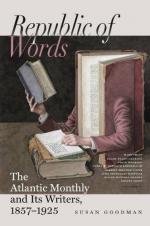Near the upper end of the Toledo the Cathedral is situated, not very favorably for effect, as only the eastern side is sufficiently free from buildings. It is a noble pile: Northern power and piety expressed by the agency of Southern and Arabic workmen, and somewhat affected by the nationality of the artificer.
The stones are fretted and carved more elaborately than those of any French or English cathedral, but entirely in arabesques and diapering of low relief, so that the spectator misses with regret the solemn rows of saints and patriarchs that enrich the portals of our Gothic minsters. These, however, are reflections of a subsequent date, and did not interfere to mar the pleasure with which we sat in front of the southern door, beneath the two lofty arches, which, springing from the entrance tower, span the street high above our heads. For some time we sat, unwilling to change and it might be impair our sensations by passing inwards. Our reluctance was but too well founded: the whole interior has been modernized in detestable Renaissance style, and in place of highest honor, above the central doorway, sits in tight-buttoned uniform a fitting idol for so ugly a shrine, the double-chinned effigy of the reigning monarch. We turned for comfort to a chapel on the right, where in four sarcophagi of porphyry are deposited the remains of the Northern sovereigns. The bones of Roger repose in a plain oblong chest with a steep ridged roof, and the other three coffins, though somewhat more elaborate, are yet simple and massive, as befits their destined use. The inscription, on that of Constantia is touching, as it tells that she was “the last of the great race of Northmen,”—the good old bad Latin “Northmannorum” giving the proper title, which we have injudiciously softened into Norman.
In a small piazza near the intersection of the main streets is a Dominican church, whose black and white inlaid marbles are amazing in their elaborateness, astounding in their preposterously bad taste. They transcend description, and can be faintly imagined only by such as know a huge marble nightmare of waves and clouds in the south aisle of Westminster Abbey. This church contains one good painting of a triumphant experiment conducted by some Dominican friars in the presence of sundry Ulemas and Muftis: a Koran and Bible have been thrown into a blazing fire, and the result is as satisfactory as that of Hercules’s death-grapple with the Nemean lion. To be sure, lions and Turks are not painters. The Martorana church is rich in gold-grounded mosaics, resembling Saint Mark’s at Venice. One represents the coronation of Roger Guiscard by the Saviour: very curious, as showing at how early a date the invaders laid claim to the Right Divine. The inscription is also noteworthy: Rogerius Rex, in the Latin tongue, but the Greek characters, thus: [Greek: ROGERIOS RAEX].[a] The Renaissance has invaded this church too, and flowery inlaid marbles




